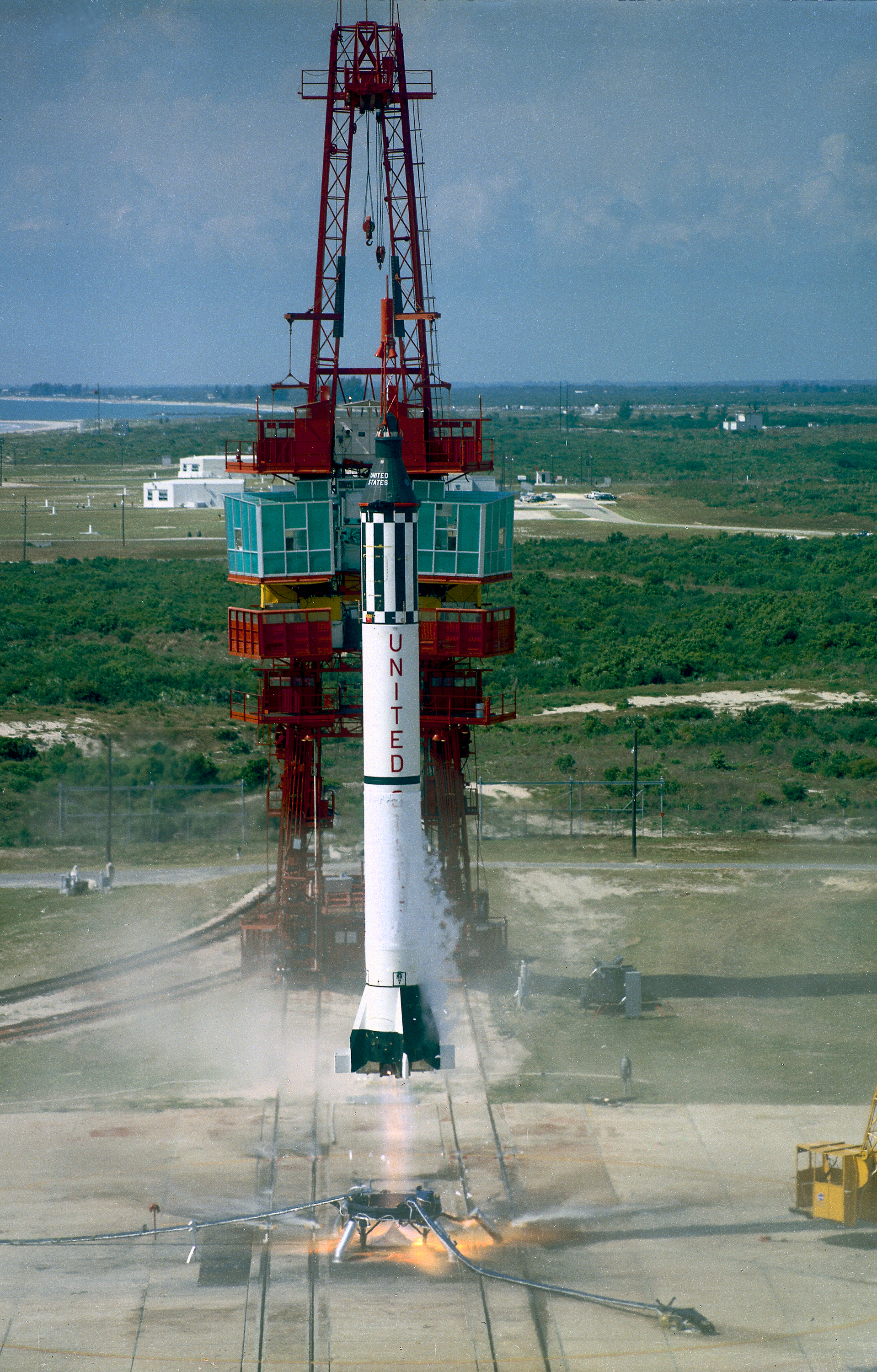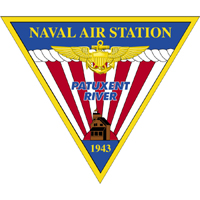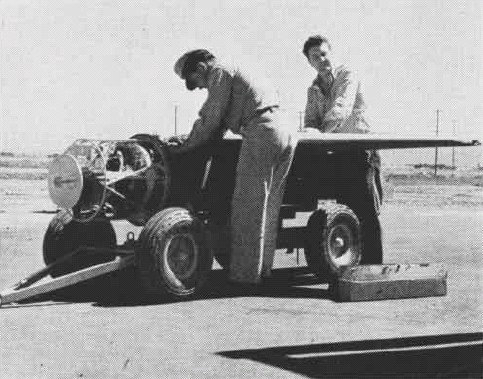|
Paul C. Donnelly
Paul Charles Donnelly (March 28, 1923 – March 12, 2014) was an American guided missile pioneer and a senior NASA manager during the Apollo Moon landing program at the Kennedy Space Center (KSC). Responsible for the checkout of all Apollo launch vehicles and spacecraft, he was also involved in every U.S. manned launch from Alan Shepard's Mercury suborbital flight in 1961 through the tenth Space Shuttle mission ( STS-41B) in 1984. During World War II, Donnelly helped develop the U.S. Navy's Bat, the first "smart bomb" in the history of warfare, which his Navy squadron dropped on Japanese ships in Borneo's Balikpapan Harbor in 1945. Biography Donnelly was born March 28, 1923, in Altoona, Pennsylvania, the son of Irish immigrant David Roy Donnelly and Magdalena (née Schreiber) Donnelly, born in Germany. He graduated from Altoona High School in 1940 (and received its Distinguished Alumni Award in 2000). He left to join the Navy in 1942, and completed courses in electronics at ... [...More Info...] [...Related Items...] OR: [Wikipedia] [Google] [Baidu] |
Altoona, Pennsylvania
Altoona is a city in Blair County, Pennsylvania. It is the principal city of the Altoona Metropolitan Statistical Area (MSA). The population was 43,963 at the time of the 2020 Census, making it the eighteenth most populous city in Pennsylvania. The Altoona MSA includes all of Blair County and was recorded as having a population of 122,822 at the 2020 Census, around 100,000 of whom live within a radius of the Altoona city center according to U.S. Census ZIP Code population data. This includes the adjacent boroughs of Hollidaysburg and Duncansville, adjacent townships of Logan, Allegheny, Blair, Frankstown, Antis, and Tyrone, as well as nearby boroughs of Bellwood and Newry. Having grown around the railroad industry, the city has worked to recover from industrial decline and urban decentralization experienced in recent decades. The city is home to the Altoona Curve baseball team of the Eastern League, which is the AA affiliate of the Pittsburgh Pirates Major League Baseba ... [...More Info...] [...Related Items...] OR: [Wikipedia] [Google] [Baidu] |
Mercury-Redstone 3
Mercury-Redstone 3, or ''Freedom 7'', was the first United States human spaceflight, on May 5, 1961, piloted by astronaut Alan Shepard. It was the first crewed flight of Project Mercury. The project had the ultimate objective of putting an astronaut into orbit around the Earth and returning him safely. Shepard's mission was a 15-minute suborbital flight with the primary objective of demonstrating his ability to withstand the high g-forces of launch and atmospheric re-entry. Shepard named his space capsule ''Freedom 7'', setting a precedent for the remaining six Mercury astronauts naming their spacecraft. The number 7 was included in all the crewed Mercury spacecraft names to honor NASA's first group of seven astronauts. His spacecraft reached an altitude of 101.2 nautical miles (116.5 statute miles, 187.5 km) and traveled a downrange distance of 263.1 nautical miles (302.8 statute miles, 487.3 km). It was the fourth Mercury flight launched with the Mercury-Redstone Launch ... [...More Info...] [...Related Items...] OR: [Wikipedia] [Google] [Baidu] |
Naval Air Station Patuxent River
Naval Air Station Patuxent River , also known as NAS Pax River, is a United States naval air station located in St. Mary’s County, Maryland, on the Chesapeake Bay near the mouth of the Patuxent River. It is home to Headquarters, Naval Air Systems Command (NAVAIR), the U.S. Naval Test Pilot School, the Atlantic Test Range, Patuxent River Naval Air Museum, and serves as a center for test and evaluation and systems acquisition relating to naval aviation. The station also operates a small outlying field, NOLF Webster. Commissioned on April 1, 1943, on land largely acquired through eminent domain, the air station grew rapidly in response to World War II and continued to evolve through the Cold War to the present. Geography The Naval Air Station Patuxent River site is located in Lexington Park, Maryland, at the confluence of the Patuxent River and the Chesapeake Bay on a peninsula known as Cedar Point. History Genesis: 1937 Prior to 1937 was once prime farmland, consisting o ... [...More Info...] [...Related Items...] OR: [Wikipedia] [Google] [Baidu] |
Chief Petty Officer
A chief petty officer (CPO) is a senior non-commissioned officer in many navies and coast guards. Canada "Chief petty officer" refers to two ranks in the Royal Canadian Navy. A chief petty officer 2nd class (CPO2) (''premier maître de deuxième classe'' or ''pm2'' in French) is equivalent to a master warrant officer in the Army and Air Force, and chief petty officer 1st class (CPO1) (''premier maître de première classe'' or ''pm1'') is equivalent to a chief warrant officer in the Army and Air Force. In spoken references, chief petty officers may be addressed as "chief" but are never addressed as "sir". Australia "Chief Petty Officer" is the second highest non-commissioned rank in the Royal Australian Navy. India A Chief Petty Officer in Indian Navy is a junior-commissioned officer, equivalent to the NATO rank enlisted grade of E-6 ( Staff Sergeant ) . This rank is equivalent to Naib Subedar in Indian Army and Junior Warrant Officer in Indian Air force. The two highest e ... [...More Info...] [...Related Items...] OR: [Wikipedia] [Google] [Baidu] |
PB4Y-2 Privateer
The Consolidated PB4Y-2 Privateer is an American World War II and Korean War era patrol bomber of the United States Navy derived from the Consolidated B-24 Liberator. The Navy had been using B-24s with only minor modifications as the PB4Y-1 Liberator, and along with maritime patrol Liberators used by RAF Coastal Command this type of patrol plane was proven successful. A fully navalised design was desired, and Consolidated developed a dedicated long-range patrol bomber in 1943, designated PB4Y-2 Privateer.Baugher, Joe"Convair PB4Y-2 Privateer."''American Military Aircraft,'' 23 August 1999. Retrieved: 13 November 2010. In 1951, the type was redesignated P4Y-2 Privateer. A further designation change occurred in September 1962, when the remaining Navy Privateers (all having previously been converted to drone configuration as P4Y-2K) were redesignated QP-4B. Design and development The Privateer was externally similar to the Liberator, but the fuselage was longer to accommodate a f ... [...More Info...] [...Related Items...] OR: [Wikipedia] [Google] [Baidu] |
Battle Of Tarakan (1945)
The Battle of Tarakan was the first stage in the Borneo campaign, Borneo campaign of 1945. It began with an amphibious landing by Allied forces on 1 May, code-named Operation Oboe One; the Allied ground forces were drawn mainly from the Australian 26th Brigade (Australia), 26th Brigade, but included a small element of Netherlands East Indies personnel. The main objective of the landing was the capture of the island's airfield. While the battle ended with success for the Allies of World War II, Allied forces over the Empire of Japan, Japanese defenders, this victory is generally regarded as having not justified its costs. The airfield was so heavily damaged that it ultimately could not be repaired in time to make it operational for other phases of the Allied campaign in Borneo. Background Geography Tarakan Island, Tarakan is a triangle-shaped island off the coast of Borneo. The island is roughly long from its northernmost point to the southern tip and wide towards the north of the ... [...More Info...] [...Related Items...] OR: [Wikipedia] [Google] [Baidu] |
National Bureau Of Standards
The National Institute of Standards and Technology (NIST) is an agency of the United States Department of Commerce whose mission is to promote American innovation and industrial competitiveness. NIST's activities are organized into physical science laboratory programs that include nanoscale science and technology, engineering, information technology, neutron research, material measurement, and physical measurement. From 1901 to 1988, the agency was named the National Bureau of Standards. History Background The Articles of Confederation, ratified by the colonies in 1781, provided: The United States in Congress assembled shall also have the sole and exclusive right and power of regulating the alloy and value of coin struck by their own authority, or by that of the respective states—fixing the standards of weights and measures throughout the United States. Article 1, section 8, of the Constitution of the United States, ratified in 1789, granted these powers to the new Congre ... [...More Info...] [...Related Items...] OR: [Wikipedia] [Google] [Baidu] |
Grove City College
Grove City College (GCC) is a private, conservative Christian liberal arts college in Grove City, Pennsylvania. Founded in 1876 as a normal school, the college emphasizes a humanities core curriculum and offers 60 majors and 6 pre-professional programs with undergraduate degrees in the liberal arts, sciences, business, education, engineering, and music. Though once associated with the Presbyterian Church, the college is now unaffiliated. History Founding Founded in 1876 by Isaac C. Ketler, the school was originally chartered as Pine Grove Normal Academy. It had twenty-six students in its first year. In 1884, the trustees of Pine Grove Normal Academy in Grove City amended the academy charter to change the name to Grove City College. By charter, the doors of the College were open to qualified students "without regard to religious test or belief." Isaac Ketler served as president until 1913. Grove City was also supported by Joseph Newton Pew, founder of the Sun Oil Company. Pe ... [...More Info...] [...Related Items...] OR: [Wikipedia] [Google] [Baidu] |
Balikpapan
Balikpapan is a seaport city in East Kalimantan, Indonesia. Located on the east coast of the island of Borneo, the city is the financial center of Kalimantan. Balikpapan is the city with the largest economy in Kalimantan with an estimated 2016 GDP at Rp 73.18 trillion. The city has the third busiest airport in Kalimantan after that in Banjarmasin and Pontianak, namely Sultan Aji Muhammad Sulaiman Sepinggan Airport. Port of Semayang was the second busiest seaport in East Kalimantan, after that in Samarinda. With a population of 688,318 according to the 2020 census, Balikpapan is the second most populous city in East Kalimantan, after Samarinda. Balikpapan has been consistently ranked as one of the most liveable cities in Indonesia. Balikpapan was originally a fishing village built by Buginese people in the 19th century. The first oil drilling began in Balikpapan on 10 February 1897, which was later set as the anniversary of the city. In 1899, the Dutch East Indies colo ... [...More Info...] [...Related Items...] OR: [Wikipedia] [Google] [Baidu] |
Borneo
Borneo (; id, Kalimantan) is the third-largest island in the world and the largest in Asia. At the geographic centre of Maritime Southeast Asia, in relation to major Indonesian islands, it is located north of Java, west of Sulawesi, and east of Sumatra. The island is politically divided among three countries: Malaysia and Brunei in the north, and Indonesia to the south. Approximately 73% of the island is Indonesian territory. In the north, the East Malaysian states of Sabah and Sarawak make up about 26% of the island. The population in Borneo is 23,053,723 (2020 national censuses). Additionally, the Malaysian federal territory of Labuan is situated on a small island just off the coast of Borneo. The sovereign state of Brunei, located on the north coast, comprises about 1% of Borneo's land area. A little more than half of the island is in the Northern Hemisphere, including Brunei and the Malaysian portion, while the Indonesian portion spans the Northern and Southern hemisph ... [...More Info...] [...Related Items...] OR: [Wikipedia] [Google] [Baidu] |
Precision-guided Munition
A precision-guided munition (PGM, smart weapon, smart munition, smart bomb) is a guided munition intended to precisely hit a specific target, to minimize collateral damage and increase lethality against intended targets. During the First Gulf War guided munitions accounted for only 9% of weapons fired, but accounted for 75% of all successful hits. Despite guided weapons generally being used on more difficult targets, they were still 35 times more likely to destroy their targets per weapon dropped. Because the damage effects of explosive weapons decrease with distance due to an inverse cube law, even modest improvements in accuracy (hence reduction in miss distance) enable a target to be attacked with fewer or smaller bombs. Thus, even if some guided bombs miss, fewer air crews are put at risk and the harm to civilians and the amount of collateral damage may be reduced. The advent of precision-guided munitions resulted in the renaming of older, low-technology, bombs as "ungu ... [...More Info...] [...Related Items...] OR: [Wikipedia] [Google] [Baidu] |
Bat (guided Bomb)
The ASM-N-2 Bat was a United States Navy World War II radar-guided glide bomb which was used in combat beginning in April 1944. It was developed and overseen by a unit within the National Bureau of Standards (which unit later became a part of the Army Research Laboratory) with assistance from the Navy's Bureau of Ordnance, the Massachusetts Institute of Technology, and Bell Telephone Laboratories. It is considered to be the first fully automated guided missile used in combat. Background In January 1941 RCA proposed a new TV-guided anti-shipping weapon, called Dragon, for which an operator would use the TV image sent from the nose of the weapon and operate aerodynamic controls during the weapon's fall. The National Bureau of Standards (NBS) would provide the airframe for use with a standard bomb, and was the same guidable ordnance airframe design used for the earlier, abortive Project Pigeon weapons program. The Pelican was a June 1942 modification using semi-active radar h ... [...More Info...] [...Related Items...] OR: [Wikipedia] [Google] [Baidu] |









